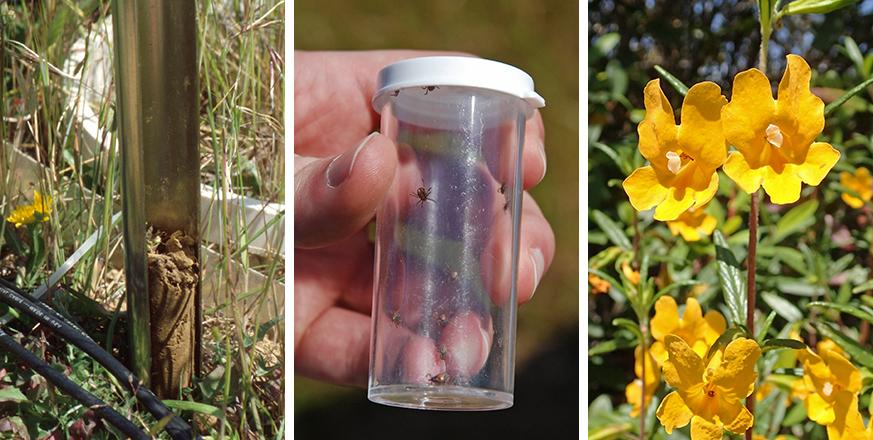A trio of new publications on microbes

Three new publications illustrate the breadth of JRBP research on microbes and their roles in ecosystem processes, disease ecology, and ecological interactions.
Reporting on studies from the Jasper Ridge global change experiment, LeRoux et al. report on a diverse guild of soil bacteria—nitrite oxidizers—which help regulate the availability of nitrogen to plants and the loss of nitrogen from ecosystems. By grouping these bacteria according to physiological traits, the authors were able to detect and account for changes in the nitrite oxidizer guild in response to global change treatments. Such linkages between microbial diversity and ecosystem function have been considered a linchpin in predicting effects of global change on ecosystems. link to abstract
As part of a series of papers on tick-borne diseases of humans, Nieto and Salkeld report on the prevalence and genetic diversity of the bacterium that causes human granulocytic anaplasmosis (HGA). They report that across 22 sites in 5 Bay area counties, 0.8% of adult western black-legged ticks and 4.2% of nymphal ticks carried the bacterium, but the prevalence differed among sites and between years, and multiple strains were observed. All of these factors could affect the risk of disease for humans. link to abstract
A new publication by Vannette and Fukami tests the idea that secondary compounds in floral nectar may reduce microbial growth and preserve nectar sugar for pollinators. Using microbes cultured from JRBP Mimulus flowers, the authors looked at microbial growth in synthetic nectar with and without particular secondary compounds. The microbes responded in very individualistic ways; in some cases, microbial growth was reduced, but in others the microbes actually reduced the concentration of secondary compound. link to abstract



